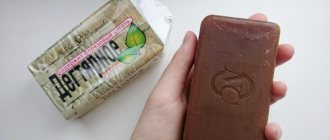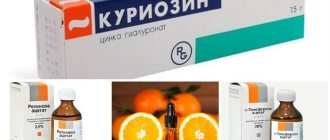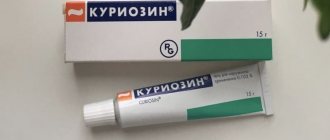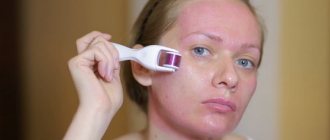It is recommended to remove moles that are often injured, tend to grow rapidly, transform, and cause aesthetic discomfort. The procedure must be carried out after consultation with a dermatologist and oncologist. It is strictly forbidden to cauterize nevi yourself!
This can lead to tissue degeneration into a malignant tumor and cause the development of fungal and bacterial infections. Celandine for moles is widely used in traditional medicine recipes, however, the use of the product is allowed only after examination by a doctor.
Useful properties of celandine
The healing plant effectively cleanses the skin thanks to the unique chemical composition of active ingredients:
- Alkaloids (cholerithrine, homochelidonine) in large quantities can cause the development of inflammation, in small dosages they have an antiviral, cauterizing effect, and relieve pain.
- Succinic, malic, and citric acid accelerates exfoliation of the upper keratinized layer of the dermis, has anti-inflammatory, antibacterial properties, and increases local immunity.
- Carotene protects the skin from the negative effects of ultraviolet radiation and maintains its elasticity.
- Vitamin C has an antioxidant, lightening effect, stimulates the immune defense of soft tissues, and strengthens small blood vessels.
- Tannins have astringent properties and form an invisible film that protects against the penetration of bacteria and fungi. Relieves inflammation, irritation, itching.
For treatment, shoots of fresh, dry plants, the underground part or juice are used. The finished concentrated extract can be purchased at the pharmacy.
Contraindications and possible complications
Celandine is used in cosmetology in precise proportions; the plant’s caustic juice has the property of burning the skin and mucous membranes. Contraindications to treatment with celandine are:
- period of pregnancy, breastfeeding;
- tendency to allergies, incl. respiratory – asthma;
- heart and vascular diseases;
- intolerance to the components included in the product;
- epileptic seizures, mental disorders.
Removal of moles from a child occurs in a medical setting. Celandine disrupts the cellular structure. This threatens the degeneration of the nevus into oncology. The wound at the site of the burned mole may become infected. It is fraught with the spread of infection, pain, and restriction of movement if it often comes into contact with clothing. If an infection occurs, therapy becomes more complicated, antibiotics are required, and you will have to consult a doctor for advice.
Taking plant-based drugs through the digestive organs provokes eating disorders, exacerbation of chronic diseases of the gastrointestinal tract, headaches, and fever.
Possible burns of the skin and mucous membranes are considered complications from taking drugs with celandine. If there are symptoms of a burn (burning, irritation, swelling) on tissues and mucous membranes, they must be rinsed in running water at room temperature for 10-20 minutes.
Evidence-based medicine advises, despite the many products available in the pharmacy, to remove skin defects using proven, affordable hardware techniques. It is not enough to anoint a mole; it is important to prevent possible complications and notice the disease in time.
Rules of application
To remove moles, celandine is cut off during flowering, the bright yellow juice is squeezed out and the problem area is smeared with it. The base is tied with a thread and as the nevus dries, tighten it tighter until the growth falls off. If a strong burning sensation occurs when applying the cauterizing agent, the juice can be diluted with boiled water 1:1. To completely remove a mole, you need to perform the procedure 3 times a day for 3-4 weeks.
After the nevus dies, a wound remains; it must be treated with antiseptics (Chlorhexidine, Furacilin), Zinc or Streptocide ointment. If the care rules are not followed, an inflammatory process may begin, causing suppuration, the formation of ulcers, and tissue scarring.
Is it possible to remove a mole with celandine?
Removing moles at home is a risky and dangerous activity from the point of view of the likelihood of complications and burns. The article is not a call for self-medication. Despite the busy schedule and the reluctance of patients to visit hospitals before the procedure, it is worth consulting with a doctor to make sure that the nevus is benign. Oncological formations are disguised as benign; the average person cannot determine the nature; this is the prerogative of doctors. Dangerous factors for the development of moles:
- has uneven edges;
- uneven color;
- diameter more than 5mm;
- quickly increases in size;
- bleeding.
In such cases, it is necessary to show it to a doctor; removing nevi yourself is prohibited.
For safety reasons, a mole should be removed if it is located in a place of increased friction with clothing, in an open area of the body so that it is exposed to ultraviolet radiation. Celandine is a plant used to combat skin diseases; it can be used internally. Folk recipes for fighting moles at home offer many remedies based on celandine. The procedure requires long-term use, the advantages are the availability and low cost of drugs. The disadvantages are the lack of control when used by individual patients, which in certain cases can harm the body.
Pharmacy drugs
If it is not possible to use a fresh plant, you can purchase ready-made preparations at the pharmacy:
- Super celandine helps remove small moles, warts, papillomas in a short period of time. A single application of a drop of the drug is sufficient; for larger growths, the manipulations are repeated for 3–5 days. A bottle with an applicator simplifies the treatment. The neoplasms die and disappear after 5–7 days, the wound heals in a week.
- Mountain balm contains extracts of celandine, gentian, golden rhododendron and spear-shaped cacaly. The drug stimulates the reverse development of benign skin growths, eliminates itching and other unpleasant sensations. Before applying the balm, the mole must be steamed and dried. Then soak a cotton swab in the composition and apply to the problem area, hold for 7-10 minutes. The procedure should be repeated twice a day for 1–2 weeks.
- Celandine oil cleanses the skin of ulcers, moles, papillomas and vulgar warts. Relieves inflammation and irritation, it can be used to remove growths on the scalp. This product acts less aggressively, unlike the balm; people with sensitive skin are recommended to dilute the medicine with sea buckthorn or olive oil.
Recipes with celandine
In summer, the plant can be used fresh by picking the plant and applying the cut to the mole. There are recipes with celandine, prepared from dried raw materials, which are prepared and dried independently according to the recommendations for drying herbs: out of sunlight, in a ventilated area, in the oven.
Celandine is included in various products, each with its own expiration date and method of application. Biologically active substances, organic acids and flavonoids contained in the stems and leaves of the plant can destroy cell structure, help relieve the inflammatory process, accelerate tissue restoration, and dry out damage. However, the process of prolonged exposure to a nevus with a product that contains celandine carries the risk of the cells degenerating into malignant ones. It is difficult to predict the process and probability; the choice of method for removing skin defects should be left to the doctor:
- Celandine juice is used to remove moles in the summer as follows: wipe the nevus and the area around it with a disinfectant, rinse off the residue with water. Then apply a thick cream to the area around the formation to protect healthy skin from burns. Apply the thick end of the freshly cut stem with the orange juice oozing out to the mole, hold for 10-15 minutes, repeat the procedure 2 times a day. The duration of the course is from 2 weeks to a month. If you grind the plant, squeeze the juice out of it, dilute it in alcohol or vodka in a 2:1 ratio, the shelf life of the product when stored in the refrigerator is up to 12 months. An alcohol solution of celandine juice is used according to the same scheme;
- The tincture is made from dry plant raw materials, purchased at a pharmacy or made with your own efforts. 50 g of raw materials are poured with a glass of alcohol and put in a dark place for a week. After the specified time, filter the tincture, drop 10-12 drops into half a glass, and drink 2 times a day after meals. The tincture is also used for local external treatment of moles with a cotton swab, avoiding contact of the product with healthy skin. The therapeutic effect occurs after 10-14 days of regular use;
- Ointment based on celandine is prepared independently, using a dried, powdered plant or freshly squeezed juice. The raw materials are mixed with lamb fat, baby cream, cosmetic petroleum jelly in a 1:2 ratio, stored in the refrigerator, and the mole is treated 4-5 times a day, leaving the product until absorbed.
You can remove defects on the skin with a decoction of celandine, which is prepared and added to the bath, and a more concentrated decoction cauterizes nevi. The product should be applied pointwise.
Consequences after using celandine
Incorrect, uncontrolled use of folk remedies can cause various complications:
- chemical skin burn;
- inflammation and suppuration of the wound after the scab falls off;
- allergic reaction;
- formation of scars.
Negative consequences in most cases are observed when celandine is applied excessively and the juice gets on healthy tissue. If a burn occurs, you must immediately rinse the skin with clean water, dry it with a cotton towel and treat it with Panthenol. It is contraindicated to continue cauterization until the wound heals.
It is not recommended to independently remove moles with celandine without first visiting a dermatologist-oncologist. The doctor will determine the etiology of the tumor, eliminate the possibility of developing a cancerous tumor and recommend the optimal treatment methods, which will not leave scars.
What are moles? What are they?
To answer this question, you must first clarify what we mean by the word “mole.” An ordinary person can easily find several types of skin formations. Brown, red, flesh-colored - all these can be called moles. In fact, the World Health Organization (WHO) classification of benign skin lesions includes about 150 names. And all this diversity can also be called moles. Read a little more about the most common types of moles here.
As we said above, there are a huge number of types of moles. Today we will talk about those that are most common and, theoretically, can pose the greatest danger - brown and flesh-colored moles.
Removal methods
At home, removing moles is much more difficult than in a salon. But some patients prefer to eliminate warts, papillomas, and nevi at home. It is better to first consult with your doctor to find out if there are any contraindications to this action. For example, if a mole is susceptible to a malignant process, it is strictly not recommended to remove it yourself. If there are no contraindications, one of the presented methods is used.
Celandine
This is a plant that is often used in various fields of medicine. It is effective in non-traditional and traditional methods. Dermatology and cosmetology are used. Thanks to celandine, the following formations are removed:
- freckles, age spots;
- papillomas, moles, warts.
Almost every pharmacy contains a solution of celandine, which can be bought ready-made. But some users prefer to prepare the solution themselves.
To prepare the extract yourself, you need to follow the step-by-step steps:
- a fresh stem of celandine is picked from a bush;
- make cuts on the sides;
- apply to a mole on the skin, pressing lightly to release the juice;
- bandage the nevus and leave for 30 minutes;
- remove the bandages, wash the lesion with warm running water, without using soap.
It is recommended to carry out the procedure 3 times a day for 2 weeks. Then you can achieve maximum effect and completely eliminate the tumor.
To achieve better results, it is recommended to use not fresh juice, but a tincture from the plant. The following method is used:
- put a tablespoon of fresh leaves into the container, which have been previously chopped with a knife;
- pour 200 ml of vodka;
- cover with a lid, put in the refrigerator, leave for 14 days.
As soon as the tincture is prepared, a cotton wool or disk is moistened in it and applied to the body area. A 3-hour compress for 1 month is sufficient.
Alcohol solution of iodine
Iodine has antiseptic, disinfectant, antibacterial, cauterizing effects. It is able to eliminate nevus due to deep penetration of the active substance into the epidermis. Gradually it will decrease in size, then completely dry out and disappear.
If there are raised moles on the human body, it is recommended to use a step-by-step method:
- spot treatment of each mole with an alcohol solution of iodine;
- repeating similar actions 3 times a day for small and medium-sized moles, 4 times a day for large ones;
- if the patient has a flat formation, the alcohol solution is first diluted in water (1 teaspoon of water per 5 drops of iodine).
Let's use another method:
- bandages or gauze are soaked in the selected solution;
- apply to the nevus overnight, you can additionally bandage or glue a bandage on top;
- In the morning, remove the compress and wash the skin area with running warm water.
After 4-5 procedures, the primary result is visible. It will gradually increase, reaching a maximum after 2 weeks.
Thanks to cauterization of the nevus, no damaged tissue remains at the site of its removal. Therefore, connective tissue scars are not formed.
Apple vinegar
This is a remedy that works on education in a shorter time. It takes a maximum of 2 weeks for a high-quality result to appear. Typically, the method can eliminate flat, small moles.
Thanks to the method, not only moles are eliminated, but also age spots. It's all about the properties of apple cider vinegar. It destroys melanocytes, so the mole area becomes lighter. The procedure is carried out in stages:
- soaking pieces of cotton pad in vinegar;
- application to the desired area of skin;
- applying a loose gauze bandage;
- use the compress for 1 week, then replace it with a new one.
If the patient is uncomfortable walking with a compress for a long time, only topical application of apple cider vinegar is sufficient. They treat the skin area for 10 minutes, then rinse with plain water. Use 4 procedures per day for 10 days.
Attention! In order not to cause a burn on the skin, not to develop allergies or irritation, you need to use a minimum concentration of vinegar. It has an aggressive effect, so it can cause many negative effects on the epidermis if used incorrectly.
Lemon juice
Lemon juice has the following effects on the epidermis:
- dries;
- whitens;
- eliminates nevi.
To achieve the effect, use freshly squeezed juice or store-bought concentrate. The liquid is suitable for eliminating all types of moles. If the listed products are not available in the store, you can buy citric acid. It is dissolved in 150 ml of water to create a solution.
To use lemon juice, you need a dropper, otherwise you may bleach areas of the skin on your hands. Apply 4 drops to each mole without rinsing. Requires 4 procedures per day for 1 week.
Salicylic acid
This is a liquid containing phenols and antiseptic components. The white crystals are pre-dissolved in sterile water to obtain salicylic acid. It is used to treat various pathologies of the epidermis:
- pimples, comedones, acne;
- rash, acne, milia.
Additionally, the product is used to destroy papillomas, moles, and warts. The drug is used topically by wiping with a cotton pad. Use the following recommendations for use:
- liquid is distributed onto each nevus or instilled with a pipette, 2 drops;
- the technique is carried out 4 times a day;
- The optimal course of therapy is 10 days.
Salicylic acid actively affects the epidermis. If the patient develops itching, burning, peeling, inflammation, redness, or rash at the treatment site, the drug is discontinued.
It is enough to discontinue the drug and use an antihistamine once for the negative reactions to decrease and disappear completely.










